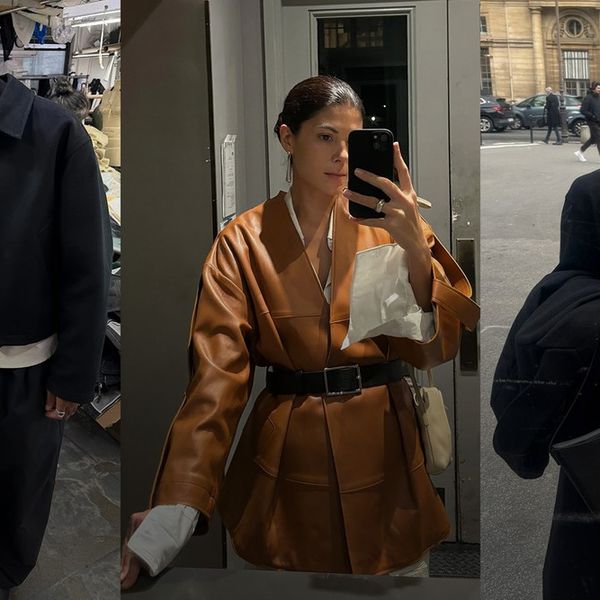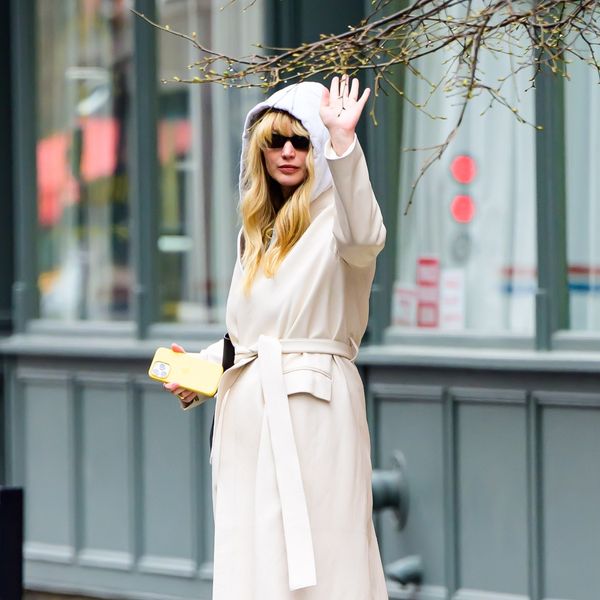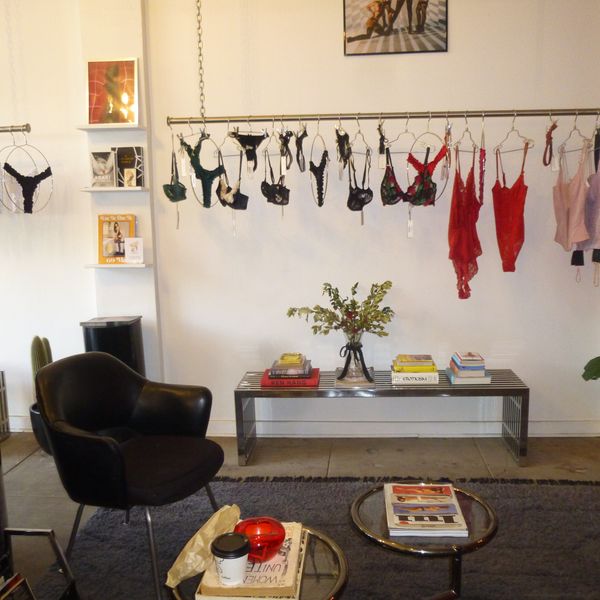Behind the Scenes of ‘White Hot: The Rise & Fall of Abercrombie & Fitch'
Director Alison Klayman discusses A&F’s impact on early 2000s teens, how she captured the brand’s inevitable downfall, and where the brand stands today.

Can you smell the acrid stench of the perfume? Hear the club music pounding in your ears? See the shirtless models greeting you at the doors? Feel your mom getting antsier every second you spent searching for too-tight T-shirts inside the dark store? In the late ‘90s and early 2000s, this was the typical Abercrombie & Fitch shopping experience—one that resulted in the commodification of cool as the brand’s logo was seemingly adhered to the chests of everyone (or at least those who could fit into the clothes) in school hallways and on magazine pages. Until it wasn’t.
In Netflix’s latest documentary, White Hot: The Rise & Fall of Abercrombie & Fitch (out today), award-winning director Alison Klayman charts the meteoric rise and fall of an average mall store propelled by an exclusionary image of the “All-American teen.” The film encapsulates a vivid moment in American youth culture, but more specifically highlights A&F's troubling brand imagery and problematic executives who were fueled by a flawed aspirational depiction of what the A&F employees and shoppers should look like: young, thin, white, and hot. So that’s who they hired and the consumers they appealed to.
Amidst a wave of A&F nostalgia that’s reemerged over the past few years, Klayman and her team spoke with former models, corporate employees, and retail staff to glean personal accounts of not only what their experience was with A&F, but how the brand’s actions impacted society as a whole. Klayman’s reporting began with court cases (there were many!), and the lawyers, plaintiffs, and journalists who covered them, including Pulitzer-winning reporter Robin Givhan. The film also zeroed in on emblematic leaders of the brand, CEO Mike Jeffries and photographer Bruce Weber, whilst taking great care not to limit the problem to these two figures.
“When it came to the story itself, the thing that really fascinated me was that it was an opportunity to tell the story of a system—a system that [involves] these seemingly abstract concepts, like racism and beauty standards, that absolutely affect all of our lives,” explains Klayman. “You can actually see concretely not just how it hurts people [in the film], but how it's been implemented and weaponized against them.”
Below, Klayman recounts how she uncovered the rise and fall (and rise again?!) of A&F, the message she hopes to convey in the film, and what she thinks about A&F’s current resurgence on platforms like TikTok.
What initially attracted you to this story? Why did you want to make this film?
“Everyone can locate themselves in this story. So you’re immediately sharing something that's personally related to identity formation or just youth—how you felt about your body, how much money your family had, what you were like in school when you were young. I just love that because then not only does that mean it's a good subject, but it also means there's an audience that can really relate to it.
When it came to the story itself, the thing that really fascinated me was that it was an opportunity to tell the story of a system—a system that [involves] these seemingly abstract concepts, like racism and beauty standards, that absolutely affect all of our lives. You can actually see concretely not just how it hurts people [in the film], but how it's been implemented and weaponized against them. Those were the two things that [served as] our team's North Star for how to tell the story.”
It's a story of a specific company, but like you said there are so many systemic layers. How did you select which points to tackle and how to arrange them throughout the film?
“In a way, it's the story of the heyday of Abercrombie, which really ends up being almost 25 years. There are a lot of chapters, let alone what came before and what came after. There were some figures like [former CEO of Abercrombie & Fitch] Mike Jeffries and [photographer] Bruce Weber where people are talking about their genius, their artistry, their contributions, and their innovations—really laudatory language—and then also some really upsetting parts of the story [that involved them] as well. They've all been reported on, so you certainly can't ignore those things, but I definitely think we wanted to focus on the part of the story that belongs to all of us. To focus only on a CEO, for example, the fear is that not only could it distract [from the larger picture], but it could almost become exculpatory. Then we can all say, ‘Look at this terrible thing that happened because of this cartoonish villain,’ and it's like, ‘Nah, man, this is much bigger.’”
Tell me a little bit about the reporting process. How did you start? Who did you talk to? Did you have trouble getting people to tell you their stories?
“We talked to so many more people than [who] appeared in the film. Some were only comfortable speaking off the record or on background. We were drawn to some of the marquee lawsuits—and, by the way, there were many, many more related to discrimination. We reached out to the lawyers and then we were able to find some of the named plaintiffs. We could start with some of those big picture things, and then also reach out to certain journalists who had done really good reporting, like Benoit [Denizet-Lewis], Sapna [Maheshwari] from Bloomberg, and Moe Tkacik [formerly of The Wall Street Journal]. So we started with those, but then we went so much deeper and wider. My producer Haley [Pappas] and co producer Colin [Jones] were literally going through LinkedIn and finding people who said they worked at Abercrombie once, then getting people to refer them to other people. We really wanted to represent so many different levels of the company and experiences. [We were] finding models too, so it was a very in-depth process.”
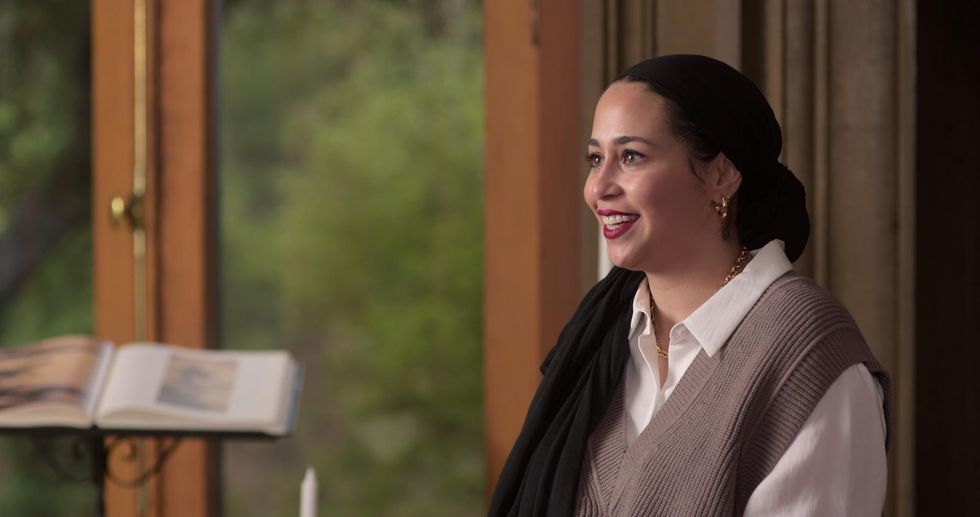
Former A&F job applicant and SCOTUS plaintiff Samantha Elauf who appears in the film;
Photo: Courtesy of Netflix
How long did this whole process take?
“I was just coming off of making a movie called The Brink, where I followed Steve Bannon for 13 months. When we were working on the materials for [White Hot], my [director of photography] Julia Liu, who also did White Hot, was like, ‘So more white supremacy? You're sticking to the subject at hand.’ I was like, ‘I guess so.’ But this one has a little more to it—the nostalgia. So, we started in 2019 and it then became a pandemic-era project, which we certainly weren't expecting. For some of these interviews, people would show up and they were like, ‘This is the most people I've been around in like six months,’ or like, ‘I went shopping for this.’ Actually, because of that, it was almost kind of fun.”
It seemed like you found a lot of people that were very excited to tell their story. Personally, it was the most fun to watch some of those models who have become such interesting characters today.
“When we looked for models, we didn't look for any specific story or angle. We really just wanted to know what it was like to be on set because we were hearing from people who worked on the catalog/magalog and how wild [it] was. It was kind of a cattle call; ‘a Survivor atmosphere’ was how it was described. It was like, bring a lot of young people and they can cut you as you go through the week and you don't know who's going to stay or go and you're partying with all these beautiful young people. The models aren't all credited in most of the materials, so we really scoured for places where there were credits.”
I was initially going to ask you about taking on a fashion film, as opposed to your previous films, but it actually doesn't have that much to do with the fashion itself.
“It's kind of like that scene in The Devil Wears Prada where Anne Hathaway's character thinks fashion has nothing to do with her. I feel like it's maybe the reverse here. You think fashion is just fashion, but actually fashion is society. In the edit, we were really focused on understanding Abercrombie versus other brands at the time. People were saying this was innovative, but wasn't Calvin Klein doing this? Or Ralph Lauren? What makes it different? It was the combination of using sex, but it also being about whiteness and youth. Then it was a mall store. That is a really important factor. You truly aren't going to buy a Polo shirt in the way that you can buy an Abercrombie shirt as a teen anywhere in America. Bottom line, Abercrombie was just like every other fashion brand in many ways, including the discrimination. This is a discriminatory industry. This is a discriminatory world. They just happen to be perhaps the most flagrant example.”
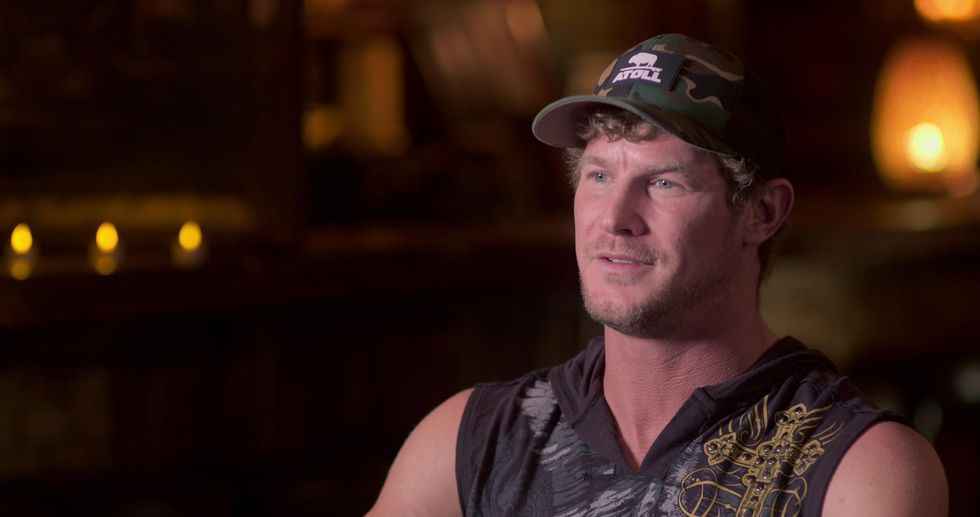
Former A&F model Ryan Daharsh who appears in the film;
Photo: Courtesy of Netflix
I’m curious to hear your thoughts on how much Abercrombie is getting praised on TikTok, specifically for their size inclusivity.
“So many thoughts. First off, for the film, what a great opportunity to realize there's a whole young audience that doesn't know what mall culture was, let alone what Abercrombie was like. So this is going to be all new to them. But also, how does that make us feel? I think about not being able to fit in the clothes when they were making things that didn't go above a [size] 10 and everything was low rise and tight. When I asked people to share their own stories, so many women on the crew talked about having hips and not being able to wear the clothes.
On the one hand it's like, thank goodness. This is a huge problem in fashion and I'm so happy that the norm today is inclusivity as a good business practice, and that should definitely be applauded. But does that mean Abercrombie has taken ownership of their past? Pointing to what they do in the present, while blaming everything on a different regime? I mean, it was not a complete cleaning of house. And they also had a lot of other reasons to change their behaviors because they realized what they were doing was wrong. So I think it's important to applaud the inclusivity, but not to confuse corporate spin for what's actually changed. I don't know what goes on inside Abercrombie today; that isn't in the purview of the film.”
You can somewhat chart the brand’s fall with the rise of social media and individuals gaining the power to call out larger corporations.
“Yes, 100 percent. And it was so hard because I feel like it's dangerous when you tell stories that cross the pre-social media, post-social media divide. There's always going to be this moment where social media is making a huge difference in the narrative and you have to acknowledge it, but you never want to be like, ‘Social media saved it all, now everything's fixed.’ Not to spoil anything, but the film ends definitively with the brilliant Robin Givhan answering the question of 'Are things fixed?’ [She says], ‘Absolutely not.’ That was so important for us to say that we have to acknowledge a change, but let's not sit back. We have to all take responsibility for what the past was like. I never would want anyone to leave and think problems are solved…because they're not.”
White Hot: The Rise & Fall of Abercrombie & Fitch premieres on Netflix April 19, 2021. Watch it here.

